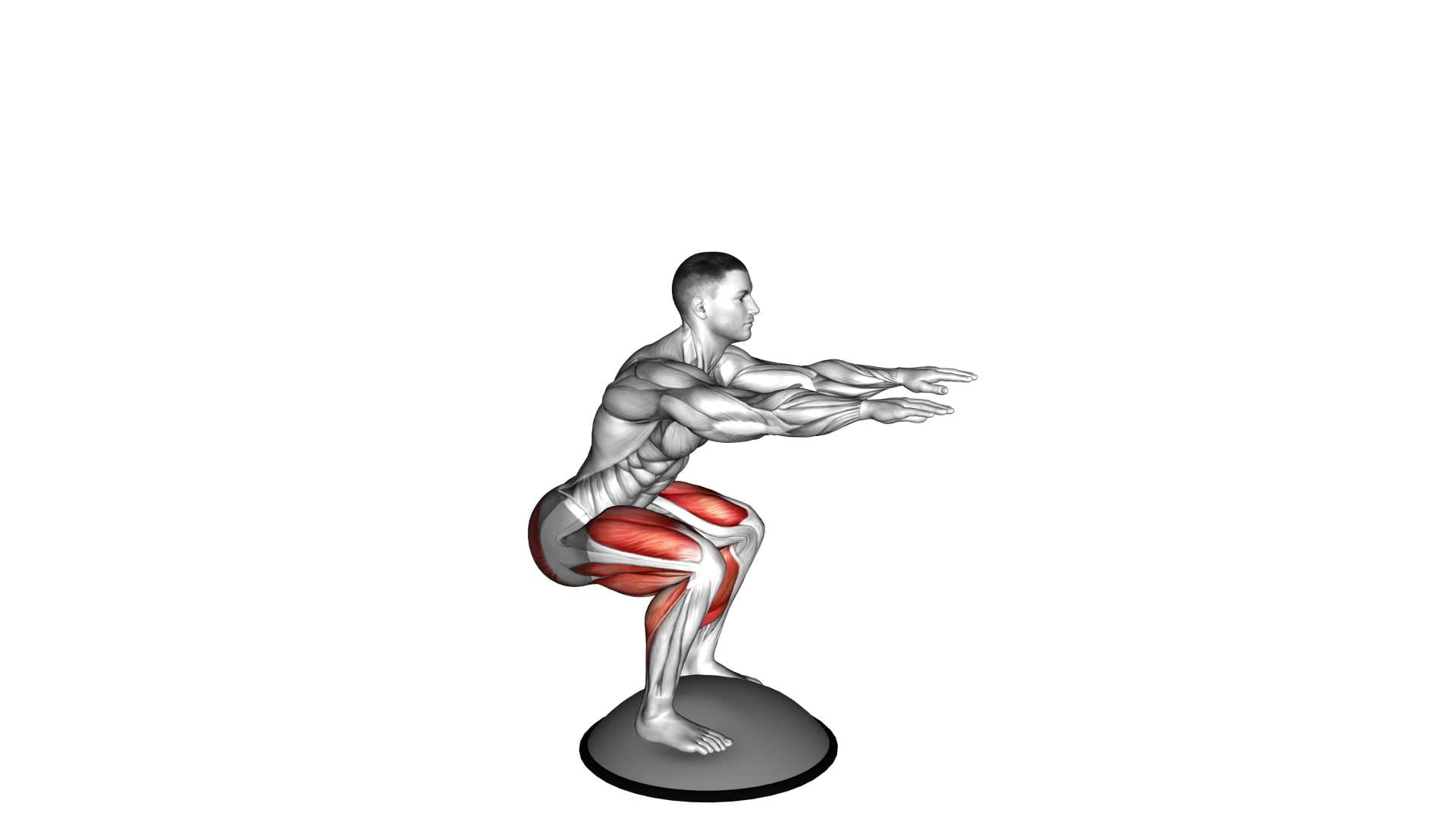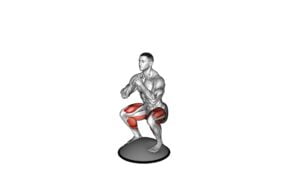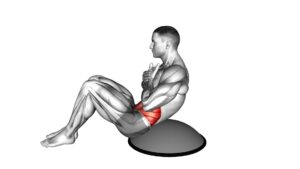Squat On Bosu Ball – Video Exercise Guide & Tips

Are you looking for a challenging and effective workout? Look no further than squatting on a Bosu ball.
Watch This Exercise Video
This video exercise guide will show you the proper form and technique to maximize your results. Avoid common mistakes and discover advanced variations to take your squats to the next level.
Get the most out of your Bosu ball squat workout with these helpful tips. Get ready to strengthen and tone your lower body like never before.
Key Takeaways
- Squatting on a Bosu Ball improves stability, balance, and overall coordination.
- It activates stabilizing muscles in the legs, ankles, and feet, as well as engages the core muscles.
- Proper form and technique include placing the Bosu Ball flat side up, maintaining proper alignment of knees and toes, and lowering into a squat with knees tracking over toes.
- Advanced variations of squats on a Bosu Ball include single leg squats, jump squats, and pistol squats.
Benefits of Squatting on a Bosu Ball
You can experience numerous benefits by incorporating squats on a Bosu Ball into your workout routine.
One major benefit is the improvement in stability that this exercise offers. When you squat on a Bosu Ball, your body is forced to engage and activate the stabilizing muscles in your legs, ankles, and feet. This helps to enhance your overall balance and coordination.
Additionally, squatting on a Bosu Ball also engages your core muscles. As you perform the squat motion, your core muscles are required to work harder to maintain balance and stability. This not only strengthens your core, but also helps to improve your overall posture.
By incorporating squats on a Bosu Ball into your workout routine, you can effectively target and strengthen your lower body muscles while also enhancing your stability and core strength.
To ensure you're performing this exercise correctly, it's important to focus on proper form and technique.
Proper Form and Technique for Squatting on a Bosu Ball
To perform squats on a Bosu Ball with proper form and technique, it's essential to focus on maintaining stability and engaging the necessary muscles. Stability training with Bosu Ball squats is an effective way to challenge your balance and improve your overall strength.
When performing this exercise, start by placing the Bosu Ball flat side up and position yourself in the center, with feet shoulder-width apart. Engage your core and keep your chest lifted throughout the movement. As you lower into the squat position, make sure your knees track over your toes and your weight is evenly distributed on both feet. This will help you maintain stability and prevent any unnecessary strain on your joints.
As you rise back up, push through your heels and squeeze your glutes to return to the starting position. By incorporating Bosu Ball squats into your routine, you can improve your balance, strengthen your lower body, and challenge your stability. Remember to always prioritize proper form and technique to maximize the benefits of this exercise.
Common Mistakes to Avoid When Squatting on a Bosu Ball
One common mistake to avoid when squatting on a Bosu Ball isn't maintaining proper alignment of your knees and toes. It's crucial to keep your knees in line with your toes throughout the movement. Allowing your knees to cave inward or turn outward can put unnecessary stress on your joints and increase the risk of injury. To ensure proper alignment, focus on pushing your knees outwards as you lower into the squat and keep them in line with your toes.
Another common mistake isn't engaging your core muscles. Your core plays a key role in stabilizing your body during the squat and maintaining balance on the Bosu Ball. Failing to engage your core can lead to instability and poor form. Before squatting, take a moment to activate your core by drawing your belly button towards your spine. Keep your core engaged throughout the entire squatting motion.
Lastly, many people make the mistake of not squatting to a sufficient depth. To get the most out of your squat and target your leg muscles effectively, aim to squat until your thighs are parallel to the ground. This will ensure that you're engaging your muscles fully and getting the desired results from your workout.
Advanced Variations of Squats on a Bosu Ball
Maintaining proper alignment of your knees and toes is crucial when performing advanced variations of squats on a Bosu Ball. These modifications on the Bosu Ball can add an extra challenge to your workout routine and help improve your balance and stability.
Here are three advanced variations of squats on a Bosu Ball:
- Single Leg Squats: Stand on one leg with the other leg extended in front of you. Slowly lower yourself into a squat position, keeping your knee in line with your toes. Push through your heel to return to the starting position. This variation targets your quadriceps, glutes, and core.
- Jump Squats: Start by standing on the Bosu Ball with your feet shoulder-width apart. Lower yourself into a squat position and explosively jump up, extending your arms overhead. Land softly back onto the Bosu Ball and immediately go into the next rep. Jump squats are a great way to improve power and explosive strength.
- Pistol Squats: Stand on the Bosu Ball with one leg extended in front of you. Slowly lower yourself into a squat position, keeping your extended leg off the ground. Push through your standing heel to return to the starting position. Pistol squats challenge your balance, flexibility, and leg strength.
Incorporate these advanced modifications into your Bosu Ball workout routine to take your squats to the next level and conquer new challenges.
Tips for Getting the Most Out of Your Bosu Ball Squat Workout
To maximize the effectiveness of your Bosu Ball squat workout, focus on proper form and engage your core throughout the exercises. This will help you get the most out of your workout and prevent injury.
One of the most common mistakes people make when squatting on a Bosu Ball isn't maintaining proper alignment. Make sure your knees are in line with your toes and your back is straight. This will ensure that you're targeting the correct muscles and avoiding strain on your joints.
Another common mistake isn't going deep enough into the squat. To fully engage your leg muscles, aim to lower your hips below parallel. This will help you build strength and stability in your lower body.
To take your Bosu Ball squat workout to the next level, try incorporating some advanced variations. One option is to add weights to your squats. Hold dumbbells or a barbell on your shoulders while performing the exercise. This will increase the resistance and challenge your muscles even more.
Another advanced variation is to perform single-leg squats on the Bosu Ball. This will require extra balance and stability, as well as engage your core muscles even further. Remember to start with lighter weights or no weights at all and gradually increase the resistance as you become more comfortable and confident with the exercise.
Frequently Asked Questions
What Is a Bosu Ball and How Does It Differ From a Regular Exercise Ball?
A Bosu ball is a versatile exercise tool that differs from a regular exercise ball in that it has a flat platform on one side and a dome-shaped surface on the other. This unique design allows for a wide range of exercises that target your core muscles and improve balance.
Incorporating a Bosu ball into your workouts can provide numerous benefits, such as enhancing stability, increasing strength, and improving overall coordination.
To properly use a Bosu ball for balance training, start with basic exercises like squats and gradually progress to more challenging movements.
Can Squatting on a Bosu Ball Help With Improving Balance and Stability?
Squatting on a Bosu ball can be a great way to improve your balance and stability. By adding an unstable surface to your squat, you engage more muscles and challenge your body to stay balanced.
This can help strengthen the muscles in your legs, core, and hips, which are essential for maintaining stability in everyday activities.
Plus, the Bosu ball adds an extra level of difficulty to your squat, making it a more effective exercise for overall strength and stability.
Are There Any Specific Muscles That Are Targeted When Squatting on a Bosu Ball?
When squatting on a Bosu ball, specific muscles are targeted to improve balance and stability. This exercise engages your quadriceps, hamstrings, glutes, and calf muscles as you work to maintain your balance on the unstable surface.
Squatting on a Bosu ball also provides benefits for strength training by increasing the demand on your core muscles to stabilize your body. Incorporating this exercise into your workout routine can help you build strength, stability, and improve overall muscle coordination.
Is Squatting on a Bosu Ball Suitable for Beginners or Should It Only Be Done by Advanced Exercisers?
Squatting on a Bosu ball can be suitable for beginners, but it's typically more beneficial for advanced exercisers. It challenges your balance and stability, engaging your core muscles and improving overall strength.
Beginners can start by using just their body weight and gradually progress as they become more comfortable.
Advanced exercisers can add in dumbbells or other weights to increase the intensity. Remember to always listen to your body and start with proper form to avoid injury.
Can Squatting on a Bosu Ball Help With Injury Prevention or Rehabilitation?
Squatting on a Bosu ball can be beneficial for injury prevention and rehabilitation. By challenging your balance and stability, it helps strengthen the muscles around your joints, reducing the risk of injuries.
Additionally, the unstable surface of the Bosu ball can improve proprioception, which is crucial for rehabilitating after an injury.
However, it's important to start with proper form and progress gradually to avoid any further injuries. Consult with a fitness professional or physical therapist for personalized advice.
Conclusion
In conclusion, squatting on a Bosu Ball can provide numerous benefits for your workout routine. By challenging your balance and stability, it helps to strengthen your core and lower body muscles.
To perform this exercise correctly, focus on maintaining proper form and technique, while avoiding common mistakes.
For those looking for a more advanced workout, there are variations of squats on a Bosu Ball to try.
Remember to follow these tips to get the most out of your Bosu Ball squat workout.

Author
Years ago, the spark of my life’s passion ignited in my mind the moment I stepped into the local gym for the first time. The inaugural bead of perspiration, the initial endeavor, the very first surge of endorphins, and a sense of pride that washed over me post-workout marked the beginning of my deep-seated interest in strength sports, fitness, and sports nutrition. This very curiosity blossomed rapidly into a profound fascination, propelling me to earn a Master’s degree in Physical Education from the Academy of Physical Education in Krakow, followed by a Sports Manager diploma from the Jagiellonian University. My journey of growth led me to gain more specialized qualifications, such as being a certified personal trainer with a focus on sports dietetics, a lifeguard, and an instructor for wellness and corrective gymnastics. Theoretical knowledge paired seamlessly with practical experience, reinforcing my belief that the transformation of individuals under my guidance was also a reflection of my personal growth. This belief holds true even today. Each day, I strive to push the boundaries and explore new realms. These realms gently elevate me to greater heights. The unique combination of passion for my field and the continuous quest for growth fuels my drive to break new ground.



